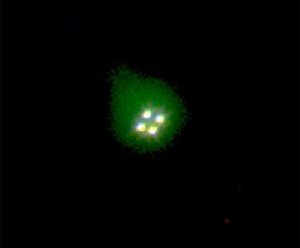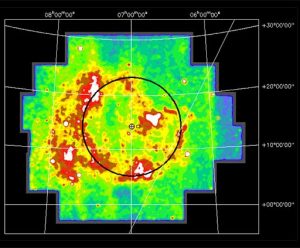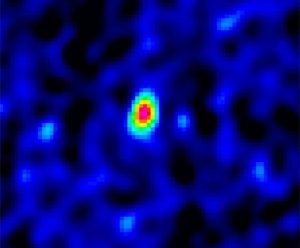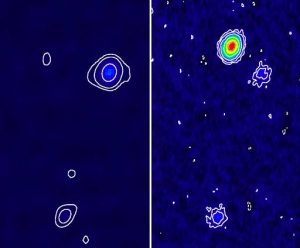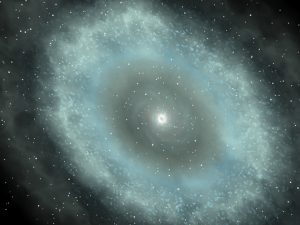Astronomers have discovered a key signpost of rapid star formation in a galaxy 11 billion light-years from Earth, seen as it was when the Universe was only 20 percent of its current age.
Cosmic Explosions Have Common Origin
A Fourth of July fireworks display features bright explosions that light the sky with different colors, yet all have the same cause.
Distance Measurement Solves Astrophysical Mysteries
Location, location, and location: the old real-estate adage about what’s really important proved applicable to astrophysics as astronomers used the sharp radio vision of the National Science Foundation’s Very Long Baseline Array to pinpoint the distance to a pulsar.
Giant Gas Cloud Made of Atoms Formed in First Stars
Astronomers studying the most distant quasar yet found in the Universe have discovered a massive reservoir of gas containing atoms made in the cores of some of the first stars ever formed.
VLBA Reveals Dust-Enshrouded ‘Supernova Factory’
Using the National Science Foundation’s Very Long Baseline Array radio telescope, astronomers have discovered a newly-exploded star, or supernova, hidden deep in a dust-enshrouded supernova factory in a galaxy some 140 million light-years from Earth.
Giant Cosmic Lens Reveals Secrets of Distant Galaxy
An international team of astronomers has discovered that a young galaxy had a central disk of gas in which hundreds of new stars were being born every year — at a time when the Universe was only a fraction of its current age.






